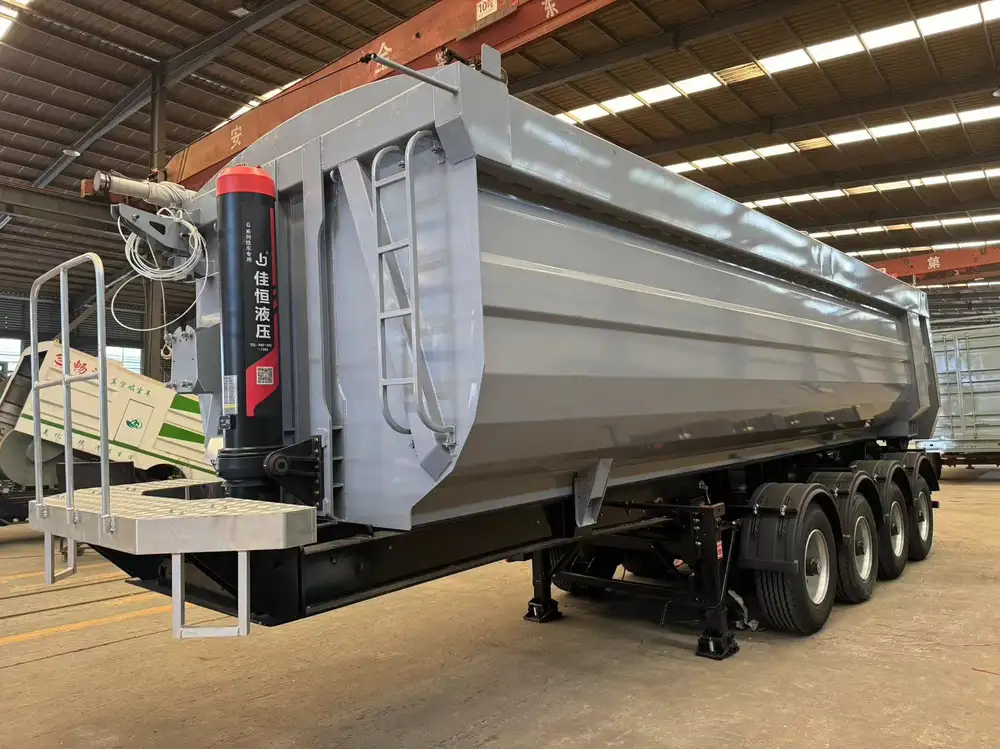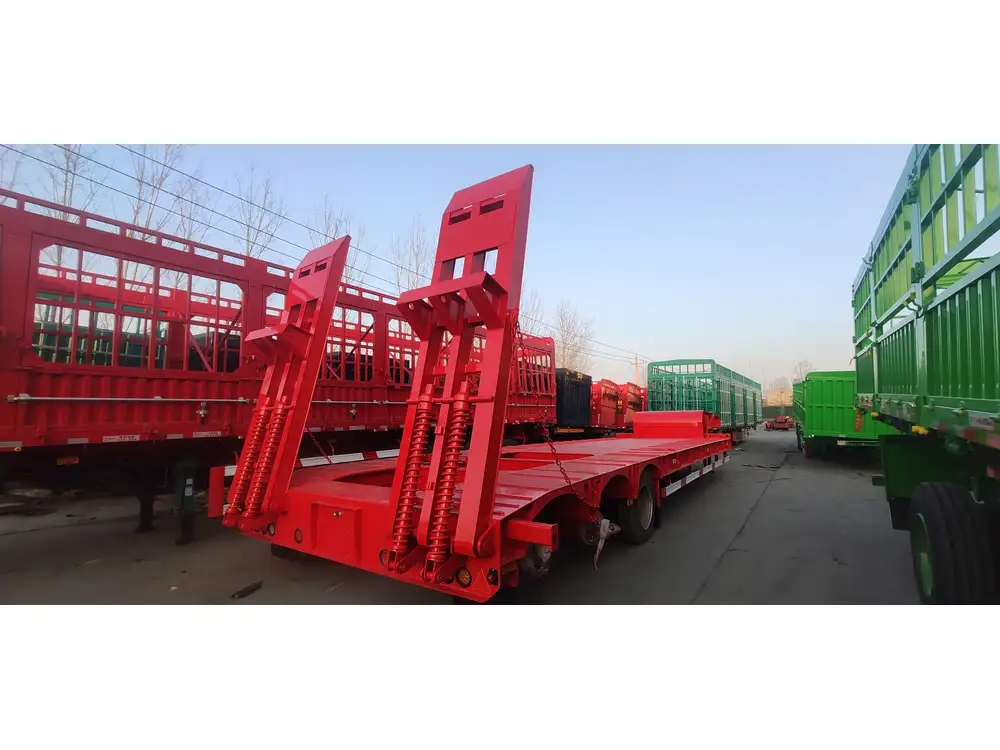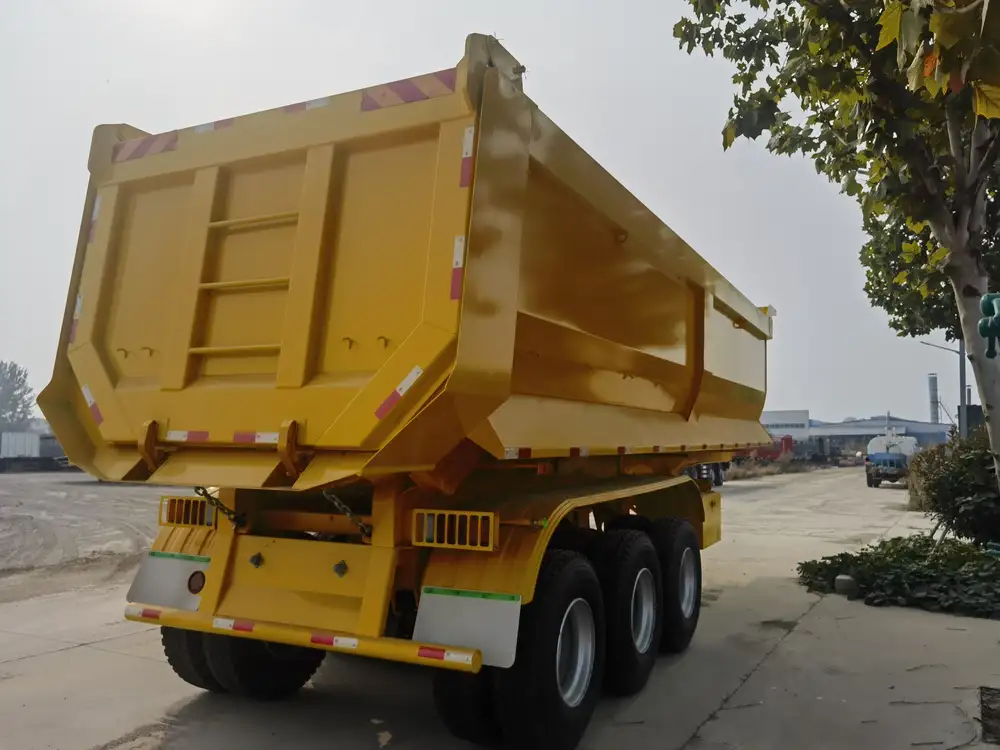Understanding the Basics of a 30 Ft Flatbed Trailer
In the world of transportation and logistics, 30 ft flatbed trailers have gained pivotal importance. These trailers are designed for a plethora of uses, from shipping construction materials to transporting heavy machinery. The versatility and functionality of flatbed trailers make them a preferred choice among shipping companies and independent contractors.
What Is a Flatbed Trailer?
A flatbed trailer is a type of trailer characterized by a flat, level platform without sides or a roof. This design allows for versatile loading and unloading of a wide range of cargo types, accommodating various dimensions and shapes. Flatbed trailers come in various lengths, but a 30-foot variant strikes an ideal balance between capacity and maneuverability.

Key Features of a 30 Ft Flatbed Trailer
Understanding the features of a 30 ft flatbed trailer can significantly impact productivity and safety during transportation. Here’s a detailed look at some key features:
| Feature | Description |
|---|---|
| Length | 30 feet, providing ample space for large and heavy loads, ideal for both local and long-distance hauling. |
| Weight Capacity | Often rated between 15,000 to 20,000 lbs, depending on the trailer’s materials and construction. |
| Material | Commonly constructed from steel or aluminum, each offering distinct durability and weight benefits. |
| Axle Configuration | Typically includes tandem axles to provide stability and distribute weight evenly. |
| Loading Ramps | Many models come with attachable ramps for easy loading and unloading of heavy equipment. |
| Tie-Down Points | Equipped with multiple tie-down points to secure loads effectively, enhancing safety during transportation. |
| Height | Usually has a low deck height for easy loading, often around 30 inches from the ground. |
Benefits of Using a 30 Ft Flatbed Trailer
When considering a 30 ft flatbed trailer, it’s beneficial to evaluate the advantages it offers. Below are some significant benefits that highlight why these trailers are a valuable asset for businesses in various industries.
1. Versatility in Cargo Handling
Flatbed trailers can handle an extensive range of cargo types, including but not limited to:
- Construction Materials: Lumber, concrete blocks, and other building supplies.
- Heavy Machinery: Tractors, bulldozers, and other industrial equipment.
- Vehicles: Cars, trucks, and motorcycles.
- Large Objects: Furniture, appliances, and other oversized items.

2. Easy Loading and Unloading
The open design of flatbed trailers facilitates straightforward loading and unloading processes, which is particularly beneficial for heavy and oversized items. Loading ramps or cranes can be employed to simplify these operations, improving overall efficiency and reducing labor costs.
3. Enhanced Visibility for Cargo
Without side walls, cargo is more visible, enabling drivers to monitor the load during transport easily. This visibility can assist in early detection of load shifts or any potential damage, allowing for prompt corrective measures.
4. Cost-Effectiveness
Investing in a 30 ft flatbed trailer can lead to significant savings over time. Their ability to transport large volumes of goods at once reduces the number of trips needed, ultimately decreasing fuel consumption and labor costs.

5. Customization Options
Many manufacturers offer customization options for such trailers. This can include specialized tie-down systems, modifications to the decking, and even tailored dimensions to fit unique business needs.
Choosing the Right 30 Ft Flatbed Trailer
When purchasing a 30 ft flatbed trailer, several factors come into play. Below is a structured framework that can help guide your decision-making process.
Assess Your Needs

Load Capacity Requirements
- Determine the Weight: Assess the typical load your business will carry. A trailer that can handle up to 20,000 lbs might be necessary for heavy machinery, while lighter loads may not require such capacity.
Frequency of Use
- Daily versus Occasional: If your operations involve frequent transportation needs, investing in a higher quality model may be wise. Contrarily, if usage is sporadic, consider durable yet cost-effective models.
Evaluate Construction Quality

Materials Used
- Steel vs. Aluminum: Steel trailers tend to be more robust, making them ideal for heavy-duty applications. Aluminum models are lightweight and resistant to rust, which can be beneficial for frequent haulers.
Build Quality
- Look for trailers with reinforced frames and high-quality welds. Ensure that the axles and suspension systems are robust enough to handle the intended loads.
Inspect Safety Features
- Tie-Down Points: Ensure the trailer has multiple tie-down options to secure cargo effectively. This is crucial for avoiding accidents due to shifting loads.
- Braking System: Evaluate the braking capabilities, especially if the trailer will be used to transport heavy equipment.

Consider the Cost
Creating a budget and understanding the total cost of ownership is essential. This includes:
| Cost Factor | Description |
|---|---|
| Purchase Price | The initial cost of the trailer itself. |
| Maintenance and Repairs | Ongoing maintenance costs, including wear and tear of tires and brakes. |
| Insurance Costs | Trailer insurance to protect against damage and liability. |
| Registration Fees | Costs for licensing and registration, which vary by region. |
Maintenance Tips for 30 Ft Flatbed Trailers
Once you’ve acquired a 30 ft flatbed trailer, maintaining its condition is essential for safety and longevity. Here are some critical tips for effective maintenance:
Regular Inspections
Conduct thorough inspections every few months or before long journeys. Check for:
- Tire Condition: Look for wear and tear, and ensure they are properly inflated.
- Frame Integrity: Inspect the frame for any signs of rust or cracks.
- Wiring and Lights: Ensure that all lights are functioning properly, and wiring is in good condition.

Cleaning
Regularly wash the trailer to remove dirt, grime, and corrosive materials. Focus on:
- Decking: Clean any spills or debris to prevent staining and ensure safety.
- Underneath: Removing dirt and salt (if used in winter conditions) can prevent rusting.
Lubrication
- Ensure that all moving parts, such as hinges and axles, are adequately lubricated to prevent wear and extend the trailer’s life.
Seasonal Care
- In winter, ensure that the trailer is stored in a dry place to avoid moisture buildup, which can cause rust.

Regulations and Compliance
When operating a 30 ft flatbed trailer, it is essential to be aware of various regulations that may affect its use. These include:
Federal and State Compliance
- Motor Carrier Safety Administration (FMCSA) regulations often dictate how trailers are to be used in transport, including weight limits and required safety equipment.
- State regulations may vary, so it’s crucial to consult local laws regarding trailer operation and licensing.
Load Securement Standards
- Adhering to the regulations concerning the securement of loads is non-negotiable. The National Highway Traffic Safety Administration (NHTSA) provides guidelines on the proper use of tie-downs and other cargo securing devices.

Conclusion
In summary, a 30 ft flatbed trailer offers exceptional versatility, cost-effectiveness, and utility for a variety of transport needs. By understanding the key features, benefits, considerations for purchase, maintenance requirements, and regulatory compliance, businesses can maximize their operational efficiency and safety. Investing in the right equipment ensures that you are well-equipped to handle the demands of your industry, paving the way for success in transporting loads of all shapes and sizes.
Your journey towards selecting the perfect trailer begins with a thorough understanding of your specific needs and factors influencing your choice. By taking several critical aspects into account, you can confidently navigate the complexities of trailer acquisition and maintenance, optimizing your transportation processes for years to come.



